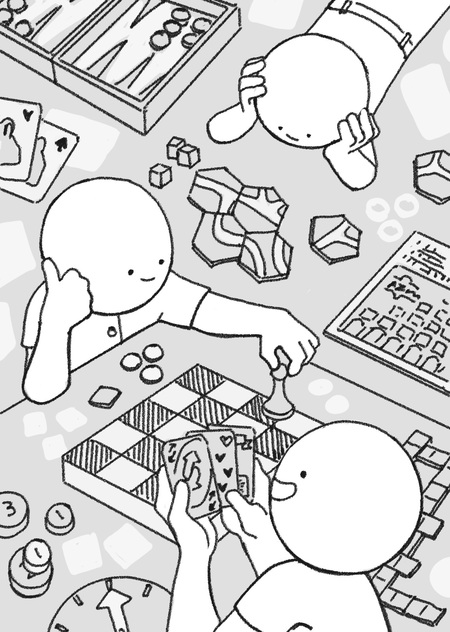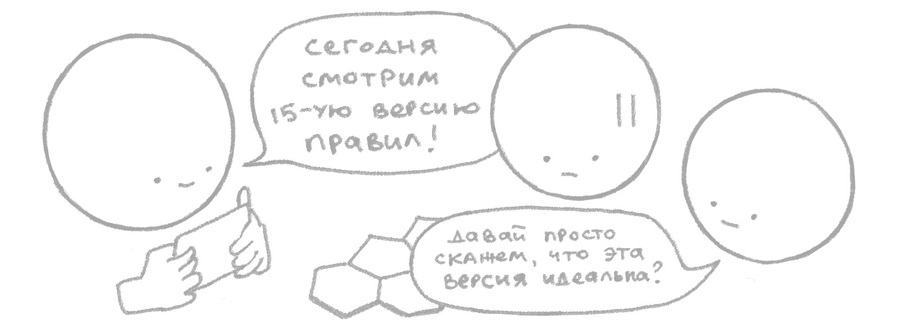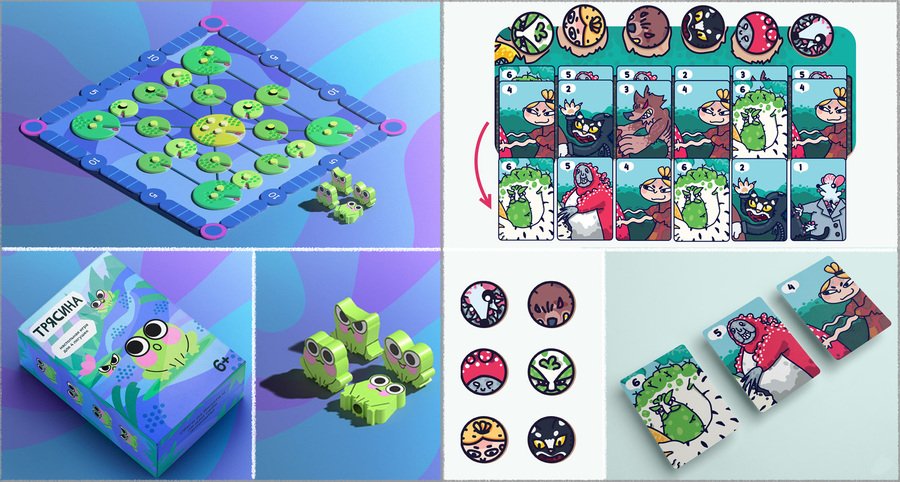
Recommendations to Game Design Fellows: Table Game
The board game — is first and foremost a set of rules, components of the game and the player’s possibilities. For us, it’s good to show how you’re making up mechanics and jnbsp; how you work with design components. A still in the difference from video games you can test and play — check that it works.

Table game analysis
First thing, like any experienced game designer, we study the market: we play in games. Play in class of good design and pleasant gameplay: <laquasson& racuo; , <laquo; Azul& racuo; , < < Everdell& raquao; , <laquo; Colonizers», <laquo; Korny», <laquo; Baillet on train& raquao; and so on. We recommend playing in Eurogames: y these games can learn how to interact and the players make decisions. When you play, analyze, a what did you like? What was the player thinking? What could you do in the your move? How did your opponent get in the way? Another way to study the market for you is to learn from the students. We watch in Portfolio the best works 1 Model 1 courses: they are the closest to you by volume and limits. Pay attention to the =nbsp; game description, presentation structure, and component design: first, it is always worth giving a general description of your desktop game in 2-3 offers, and only then go tell the rules.

Table games for first-year students https://portfolio.hse.ru/Project/185651 and https://portfolio.hse.ru/Project/149066
What do we expect from the concept of the table game?
• short-formulated substance of your gameplay • clear and understandable board game rules, in which players play among themselves how to win? A target? How does the player’s move work? How do players interact? When does the game end? • design components of examples of situations in games & bull; examples of game choices
All of this is in the top 1st line, look in the portfolio!
How do you do it cool as well?
Not make complex games! It’s enough to explore simple games to come up with an interesting couple of actions for the player. For example, in game of checkers in we’re only one action: moving checkers, and travel pathostern is very simple. The game is interesting about the rules and capabilities of the player on the field, a not the number of components and actions. The game <laqua; New Earth» — only 9 tyles and two actions. A more strategic gameplay with making decisions about when setting up a rival and how to get a winning combination of yourself. We’ve all seen it many times. Why shouldn’t we play a mosquito game? Look for charismatic sttings that no one’s ever seen before.
Show how to play. See how rules are written for the_nbsp; table, in what order, as specified by the gameplay. Try to describe the game as well, and tell me, in that the player will play and what to think. Describe not simply actions, but what it will give to the player. The rules of different games can often be found on the website Hobbygames and The Music Games in the PDF format, not even the buying the game.
It’s a unique plus: it’s easy to let players play the game at the 'nbsp; the whole system. Draw a card-to-card on the handle on the chips, hand it over to the players, describe the rules. And try playing on paper.
Yeah, we don’t know what’s going on on the left top picture either.
I make comfortable components. See how beautiful the tablet is in the Azul game: it tells how many chips you need to put in the row to collect the tile how many points and how to earn them. Your task is to make the most understandable and the most convenient components for the game. Focus on the which was convenient for you.
Typical Table Errors
Mistake № 1 B Game has no choice Typical example of such mechanics: you you throw a cube and go to specified number. What number fell out there and went, player not makes decisions. Or else — you pull the map and she tells you what to do. Another way to make the board without an interesting choice is to deprive the player of information. For example, close the whole field with a fog of war and not give the player tools to cope with unknown. There’s no choice. Look for what the player can decide. And play in the table where there is a choice. Analyze, in what is the choice when and how the player understands where the benefits are. Maybe I can choose different actions. What about resources? On what basis do I make decisions, what information gives me a choice?
Mistake № 2 Components not indicate how to play. Player not can figure out where to put, after rules have to climb the rules every time. Take the information to cards/letters/field and will be available to you are strong and convenient design.
Mistake № 3 Players make up the game without you. You write the rules, then and it is made clear that «games negotiate& raquao; , & laquao; games talk& raquao;. It’s often hidden in the lack of specificity in the rules and the unfinished game design. A it’s also funny to players if the game isn’t about social. Look for specific rules. Make an arrangement with the mechanic. For example, through bets, game components, or clear rules on the course of negotiations, with a prescribed outcome in disagreement.
Mistake № 4 Players are not play with each other. Most interesting in often not & laquao; gather pals sitting next to& raquao; and quarrel. Check that players can play with each other with the other: interfere, build theories together, influence each other’s game. The error of № 5 is a waste of symbols. & quo; Game 1 picks a map of the forest, and game 2 so. Then the player 3 and takes both cards after which…». We can cut it down! & quo; You pick a map and wait for the rest of the players to take the same game by one& raquao;.
I don’t know anything about the tablets, what do I do?
B first line: it is possible to do a project not about the idea. Consider other options. Do a project that shows your experience and you’re playing. If you really want to do all of this, you’re gonna have to do the tips (or you’re gonna get ready for the 'nbsp; you’re gonna get ready for the 'nbsp; you’re gonna have to go to the 'nbsp; you’re gonna have to go to the 'nbsp; you’re gonna have to go to the 'uno and 'nbsp; you’re gonna have to play the 'nbsp; you’re gonna have to go to the 'unbsp'! == sync, corrected by elderman == @elder_man Another option is — go to The pre-university training module game. There’s a pro-nbsp; that’s how to do a good (in the number of) column, they’ll tell, show, and they’ll even make you do it. It’s important: better to come to FDP at full year, from October. If you come later, you can skip some base from which further learning is built.
== sync, corrected by elderman == @elder_man